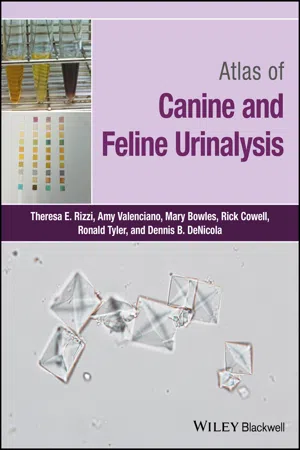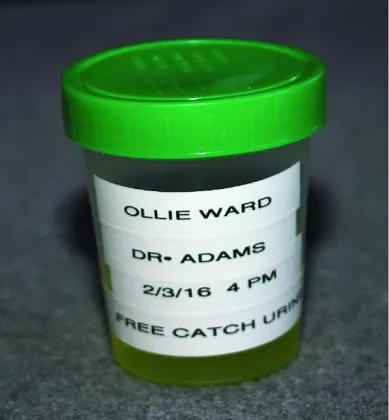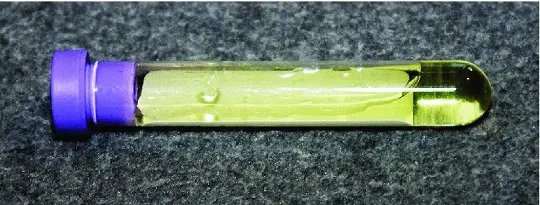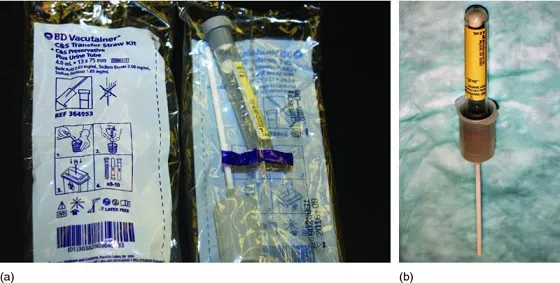
Atlas of Canine and Feline Urinalysis
- English
- ePUB (mobile friendly)
- Available on iOS & Android
Atlas of Canine and Feline Urinalysis
About this book
Atlas of Canine and Feline Urinalysis
Atlas of Canine and Feline Urinalysis offers an image-based reference for performing canine and feline urinalyses. Hundreds of full-color images depict techniques, physical characteristics, urine chemistry, and microscopic characteristics of urine sediment in dogs and cats. Written by leading experts, this highly illustrated resource acts as an aid to accurately identifying cytological features and interpreting both chemical and sediment findings.
Logically organized for easy navigation, the book covers urine collection and specimen handling, initial assessment, urine chemistry, and microscopic findings, including casts, crystals, cells, organisms, and artifacts. Atlas of Canine and Feline Urinalysis is an important diagnostic tool for veterinary undergraduate and graduate students, veterinary technicians, general practitioners, veterinary clinical pathologists, and specialists in other disciplines.
Key features
- Presents hundreds of full-color images for reference and picture-matching while using urinalysis as a diagnostic tool
- Provides a complete guide to properly performing a urinalysis exam in the veterinary practice
- Emphasizes collection techniques, physical assessment, urine chemistry, and the microscopic sediment exam
- Covers casts, crystals, cells, organisms, and artefacts
- Offers a practical, visual resource for incorporating urinalysis into the clinic
Frequently asked questions
- Essential is ideal for learners and professionals who enjoy exploring a wide range of subjects. Access the Essential Library with 800,000+ trusted titles and best-sellers across business, personal growth, and the humanities. Includes unlimited reading time and Standard Read Aloud voice.
- Complete: Perfect for advanced learners and researchers needing full, unrestricted access. Unlock 1.4M+ books across hundreds of subjects, including academic and specialized titles. The Complete Plan also includes advanced features like Premium Read Aloud and Research Assistant.
Please note we cannot support devices running on iOS 13 and Android 7 or earlier. Learn more about using the app.
Information
1
Sample Collection and Handling
Collection of Urine Samples
Box 1.1 General considerations for urine sample collection, handling, and submission.
Collection
- Observe principles of aseptic technique as much as possible
- Collect adequate volume (minimum of 5 mL recommended) (Figure 1.1)
- Clean and/or sterile container provided by veterinarian preferred for collection for UA
- Sterile container preferred for collection of sample to be cultured
- When possible, withhold drugs and fluid administration prior to sample collection
Handling
- Ideally UA should be performed within 60 minutes of sample collection and no longer than 6 hours following collection
- Refrigerate and cap the sample when UA cannot be performed within 60 minutes of collection (if possible, perform the dipstick portion prior to refrigeration)
- Refrigerated samples should be brought to room temperature prior to performing UA
Submission
- Container submitted should identify sample as urine, be capped, and have adequate patient identification (Figure 1.2)
- Consider using preservative tube* for storage and submission of sample for culture
- Sample for cytologic evaluation should include one or more air-dried slides of urine sediment prepared by the blood smear or squash preparation technique along with a urine sample placed in an EDTA tube (Figure 1.3)
- Pertinent information should be provided for samples submitted for evaluation to an outside laboratory, including patient signalment, history, and method of urine collection
- Fasted samples submitted for evaluation frequently have increased specific gravity values, more cells and casts, and decreased pH values compared to non-fasted samples




Free-Catch Urine Collection
Box 1.2 Techniques for obtaining free catch urine samples – normal voiding.
Canine Technique
- If the dog's hair coat around the vulva or prepuce is notably dirty, clean the area and pat dry
- Walk the dog on a leash early in the morning, after feeding, or at another time that the dog is accustomed to urinating
- Observe the dog for initiation of micturition and be prepared to collect a sample at the beginning of urination. If desired, latex gloves can be worn by the collector for his/her protection. The collector can plan on positioning the urine container with his/her hands or with a device designed to hold and position the container. Commercial collection devices are available (e.g. Olympic Clean-Catch™) or can be made at home. One such homemade device consists of a yardstick or pole/broom-type handle taped to the handle of a ladle or suitable plastic measuring cup (Figure 1.5)). Have one or two suitable containers available for urine collection. The container(s) should be clean and dry and appropriate for the size of the dog. Container(s) may be provided by the veterinarian or a suitable clean, dry household plastic or glass container may be used for urine collection. Smaller dogs may require a flatter collecting receptacle such as a shallow plastic tray, a Styrofoam plate with a raised rim, or a metal, disposable pie plate (Figure 1.6)
- As soon as micturition is initiated or a micturition posture is assumed, place the collection container as unobtrusively as possible under the vulva, immediately anterior and ventral to the prepuce, or directly in the urine stream produced. If possible, obtain at least 5–10 mL (1–2 tsp) for urinalysis. If the collector is able, a second container (midstream sample) should be positioned for urine collection provided the dog is continuing to urinate after a sample of the initial urine stream has been obtained in the fir...
Table of contents
- Cover
- Title Page
- Copyright
- Dedication
- Acknowledgments
- Introduction
- 1: Sample Collection and Handling
- 2: Initial Assessment: Physical Characteristics
- 3: Urine Chemistry
- 4: Urine Sediment
- References
- Index
- EULA